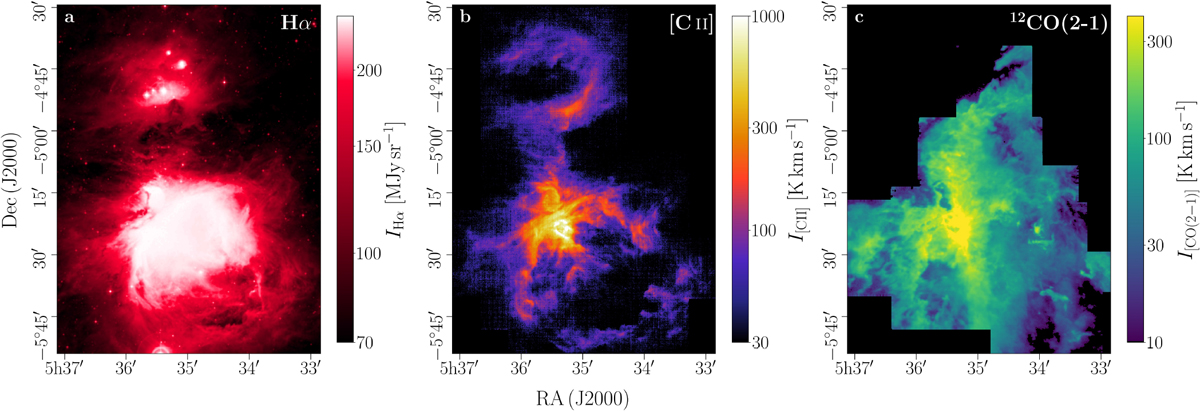Fig. 1

Overview of the Orion Nebula (M 42), M 43, and NGC 1973, 1975, and 1977 in different wavelenghts. Left: DSS2 Hα emission (ESO Archive). Center: [C II] line-integrated emission (Pabst et al. 2019). Right: line-integrated 12CO(2–1) emission (Berné et al. 2014; Goicoechea et al. 2020). Hα emission stems from the ionized gas (T ~ 104 K), the [C II] lineis emitted by mostly neutral gas (T ~ 100 K), whereas CO traces the molecular gas (T ~ 30 K). M 42 and M 43 have a substantial amount of molecular gas in the background, while NGC 1977 seems to be devoid of it (the coverage of the CO map is not sufficient, however, see discussion of the expansion characteristics below). All three regions comprise ionized gas within their neutral limb-brightened shells.
Current usage metrics show cumulative count of Article Views (full-text article views including HTML views, PDF and ePub downloads, according to the available data) and Abstracts Views on Vision4Press platform.
Data correspond to usage on the plateform after 2015. The current usage metrics is available 48-96 hours after online publication and is updated daily on week days.
Initial download of the metrics may take a while.


